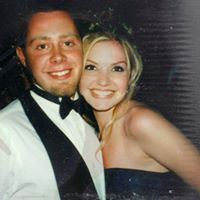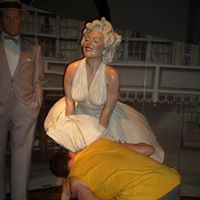Scott H Shattuck
age ~65
from Simpsonville, SC
- Also known as:
-
- Scott Hamilton Shattuck
- Scott Shattuck Hamilton
- Scott H Shattlick
- Scott H Hacker
- Scott Schaddock
Scott Shattuck Phones & Addresses
- Simpsonville, SC
- Denver, CO
- Scottsdale, AZ
- 11268 Grove St, Westminster, CO 80031
- 3008 Summerlake Dr, Atlanta, GA 30350
- Hallowell, ME
- Rio Rancho, NM
- Boulder, CO
- Ridgway, CO
- Alpharetta, GA
Resumes

Scott Shattuck
view sourceLocation:
11268 Grove St, Westminster, CO 80031
Industry:
Internet
Work:
Technical Pursuit
Chief Executive Officer
Chief Executive Officer
Skills:
Xml
Ajax
Javascript
Software Development
Perl
Python
Agile Methodologies
Web Development
Databases
Cloud Computing
Ruby
Software Engineering
Architecture
Java
Web Applications
Ajax
Javascript
Software Development
Perl
Python
Agile Methodologies
Web Development
Databases
Cloud Computing
Ruby
Software Engineering
Architecture
Java
Web Applications

Kitchen Manager
view sourceLocation:
Denver, CO
Industry:
Food Production
Work:
Wystone's World Teas 2008 - 2009
Executive Chef
Kalamazoo Country Club 2006 - 2007
Sous Chef
Billy's Inn 2006 - 2007
Kitchen Manager
Executive Chef
Kalamazoo Country Club 2006 - 2007
Sous Chef
Billy's Inn 2006 - 2007
Kitchen Manager
Education:
The Culinary Institute of America

Scott Shattuck
view source
Scott Shattuck
view source
Scott Shattuck
view sourceIndustry:
Law Practice

Scott Shattuck
view sourceLocation:
United States
Name / Title
Company / Classification
Phones & Addresses
President
DBSA, INC
9155 Nesbit Fry Rd #43 , Alpharetta, GA 30022
114 Industrial Park Place , Rio Rancho, NM 87124
114 Industrial Park Place , Rio Rancho, NM 87124
Us Patents
-
System Supporting Unified Event Handling In Ecmascript
view source -
US Patent:20030149799, Aug 7, 2003
-
Filed:May 3, 2002
-
Appl. No.:10/138607
-
Inventors:Scott Shattuck - Westminster CO, US
William Edney - Chesterfield MO, US
James Bowery - Las Vegas NV, US -
International Classification:G06F009/46
-
US Classification:709/318000
-
Abstract:A system implementing unified and extensible event handling in ECMAScript is described. The current capturing, bubbling, and DOM Level 2 systems of UI event handling are unified without requiring upgraded or altered browsers by leveraging JavaScript to create data structures and processes which capture and realign these disparate systems of event handling. Object dependency is supported through the same unified event system which resolves the differences between capturing, bubbling, and DOM Level 2 event models while integrating non-UI and distributed event support resulting in a system capable of supporting MVC patterns. The particular advantage of the described system is that the implementation is in JavaScript and requires no applets, plugins, or other alterations to currently deployed web browsers.
-
System Supporting Object-Oriented Constructs In Ecmascript
view source -
US Patent:20070168949, Jul 19, 2007
-
Filed:Jun 19, 2006
-
Appl. No.:11/455569
-
Inventors:Scott Shattuck - Westminster CO, US
William Edney - Chesterfield MO, US
James Bowery - Las Vegas NV, US -
International Classification:G06F 9/44
-
US Classification:717115000
-
Abstract:An internally consistent system implementing object-oriented programming constructs in ECMAScript is described. First, a function, rather than the ECMAScript new keyword, is used to initiate new instance creation. The instance creation function is assigned to a non-Function instance rather than an instance of Function as required for use of new. Instances with attached instance creation functions serve as “type proxy” objects and replace the Function instances normally used as types. Since the type proxies and prototype chains created and maintained by the invention are instances of normal objects, rather than instances of Function as required by standard ECMAScript, this approach allows native ECMAScript lookup semantics to be leveraged while supporting inheritance of both state and behavior for instances and types to any level desired. A set of functions known herein as property-definition functions are used by type proxies to assign properties as global, local, instance, or type properties rather than the standard ECMAScript approach of direct assignment. Where constraints exist such as “read-only”, “private”, etc. the physical storage of the property may be located away from the target object in a separate storage structure. Method definitions further place a “backstop” method on Object.prototype. Invocation of the backstop triggers a callback to the non-implementing receiver followed by a scan of guardians for multiple inheritance, followed by dynamic type conversion and method creation. The result is a highly enhanced system of polymorphic behavior.
-
System Supporting Object-Oriented Constructs In Ecmascript
view source -
US Patent:20030120824, Jun 26, 2003
-
Filed:May 3, 2002
-
Appl. No.:10/138631
-
Inventors:Scott Shattuck - Westminster CO, US
William Edney - Chesterfield MO, US
James Bowery - Las Vegas NC, US -
International Classification:G06F009/46
-
US Classification:709/313000
-
Abstract:An internally consistent system implementing object-oriented programming constructs in ECMAScript is described. First, a function, rather than the ECMAScript new keyword, is used to initiate new instance creation. The instance creation function is assigned to a non-Function instance rather than an instance of Function as required for use of new. Instances with attached instance creation functions serve as “type proxy” objects and replace the Function instances normally used as types. Since the type proxies and prototype chains created and maintained by the invention are instances of normal objects, rather than instances of Function as required by standard ECMAScript, this approach allows native ECMAScript lookup semantics to be leveraged while supporting inheritance of both state and behavior for instances and types to any level desired. A set of functions known herein as property-definition functions are used by type proxies to assign properties as global, local, instance, or type properties rather than the standard ECMAScript approach of direct assignment. Where constraints exist such as “read-only”, “private”, etc. the physical storage of the property may be located away from the target object in a separate storage structure. Method definitions further place a “backstop” method on Object.prototype. Invocation of the backstop triggers a callback to the non-implementing receiver followed by a scan of guardians for multiple inheritance, followed by dynamic type conversion and method creation. The result is a highly enhanced system of polymorphic behavior.
-
Automatic Pose Setting Using Computer Vision Techniques
view source -
US Patent:20150213590, Jul 30, 2015
-
Filed:Jul 29, 2011
-
Appl. No.:13/193861
-
Inventors:Brian Gammon BROWN - Longmont CO, US
Zhe FAN - Boulder CO, US
Scott SHATTUCK - Westminster CO, US
Matt LOWRIE - Louisville CO, US -
Assignee:Google Inc. - Mountain View CA
-
International Classification:G06T 7/00
G06T 19/20
G06T 17/05
G06T 15/20
G06T 17/10 -
Abstract:Embodiments relate to determining pose data for a user-provided image. A user may model a building in a web browser plug in by mapping positions on two-dimensional images to a three-dimensional model of a building shown in the image. A geometry of the model of the building may be determined. The user may then provide an image that includes the building. One or more features of the selected building in the user-provided image may be detected using computer vision techniques. Detected features are correlated with features of the geometry of the three-dimensional model. Based on the correlation, pose data may be associated with the user-provided image.
-
Altering Automatically-Generated Three-Dimensional Models Using Photogrammetry
view source -
US Patent:20150172628, Jun 18, 2015
-
Filed:Jun 30, 2011
-
Appl. No.:13/174493
-
Inventors:Brian Gammon BROWN - Boulder CO, US
Tilman Reinhardt - Woodside CA, US
Zhe Fan - Boulder CO, US
Scott Shattuck - Boulder CO, US -
Assignee:Google Inc. - Mountain View CA
-
International Classification:H04N 13/02
G06T 17/10
G06K 9/00 -
Abstract:Embodiments enable alteration of automatically-generated three-dimensional models using photogrammetry. In an embodiment, a method creates a three-dimensional model using a two-dimensional photographic image. An automatically generated three-dimensional model geocoded within a field of view of a camera that took the two-dimensional photographic image is received. A perspective of the camera that took the photographic image is represented by a set of camera parameters for the first two-dimensional photographic image. A user input constraint indicating that a feature of the automatically generated three-dimensional model corresponds to a position on two-dimensional photographic image is also received. In response to the user input constraint, the three-dimensional model is altered, using photogrammetry, according to the user input constraint and the set of camera parameters.
Googleplus

Scott Shattuck
Lived:
Denver, CO
Los Angeles, CA
San Francisco, CA
Dallas, TX
Tampa, FL
Calgary, Alberta
Washington, DC
Augusta, ME
Charleston, SC
Atlanta, GA
Los Alamos, NM
Los Angeles, CA
San Francisco, CA
Dallas, TX
Tampa, FL
Calgary, Alberta
Washington, DC
Augusta, ME
Charleston, SC
Atlanta, GA
Los Alamos, NM
Work:
Yahoo! - Principal Software Engineer (2011)
Technical Pursuit Inc. - Programmer (1999)
Google - Senior Software Engineer (2007-2010)
Technical Pursuit Inc. - Programmer (1999)
Google - Senior Software Engineer (2007-2010)
Tagline:
Programmer, artist, architect, writer, drummer, motorcyclist, yogi, human.

Scott Shattuck
Education:
Purdue University - Building Construction Management

Scott Shattuck

Scott Shattuck

Scott Shattuck

Scott Shattuck

Scott Shattuck
Work:
NATIONAL IMPORT SERVICES - OWNER

Scott Shattuck
view source
Scott Shattuck
view source
Scott Shattuck
view source
Scott Shattuck
view source
Scott Shattuck
view source
Scott Shattuck
view source
Scott Shattuck
view source
Scott David Shattuck
view sourceClassmates

Scott Shattuck
view sourceSchools:
Ionia Middle School Ionia MI 1997-2001
Community:
Kathryn Dehn, David Lott

Scott Shattuck
view sourceSchools:
West Technical High School Cleveland OH 1983-1987
Community:
Ed Yandek
Myspace
Youtube
Get Report for Scott H Shattuck from Simpsonville, SC, age ~65





![Waiting On a Miracle - Encanto [Male Version] by S... Waiting On a Miracle - Encanto [Male Version] by S...](https://i.ytimg.com/vi/0hm0480RLYY/hq720.jpg?sqp=-oaymwEcCNAFEJQDSFXyq4qpAw4IARUAAIhCGAFwAcABBg==&rs=AOn4CLASeC2KorhvZlO11ux0Lm7v69Xo9w)
![Speechless - Aladdin [Male Version] by Scott Shatt... Speechless - Aladdin [Male Version] by Scott Shatt...](https://i.ytimg.com/vi/H_QFU3vPM_Q/hq720.jpg?sqp=-oaymwEcCNAFEJQDSFXyq4qpAw4IARUAAIhCGAFwAcABBg==&rs=AOn4CLBTvrrQVP8kLbHhP5Z7_1k5GKHPgQ)



